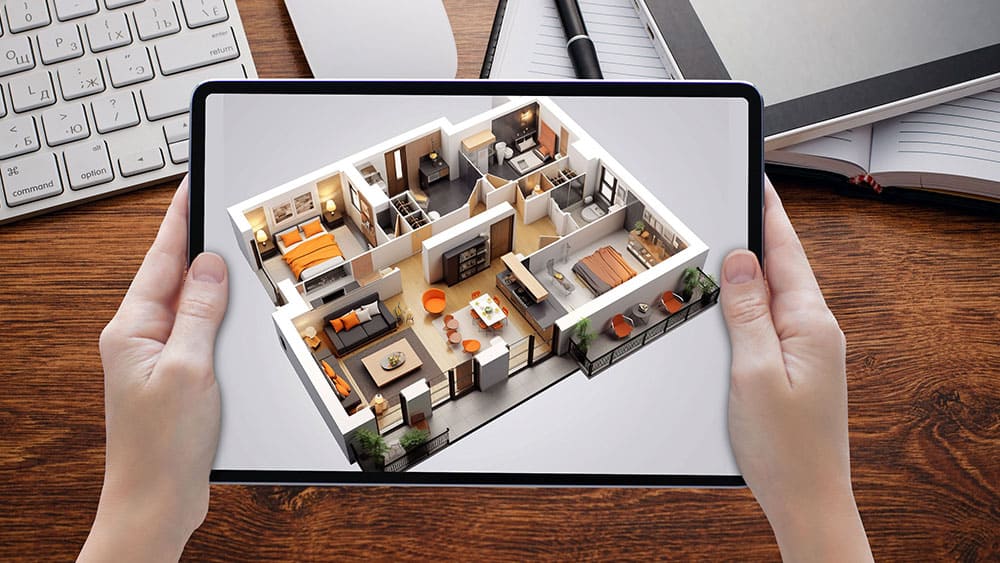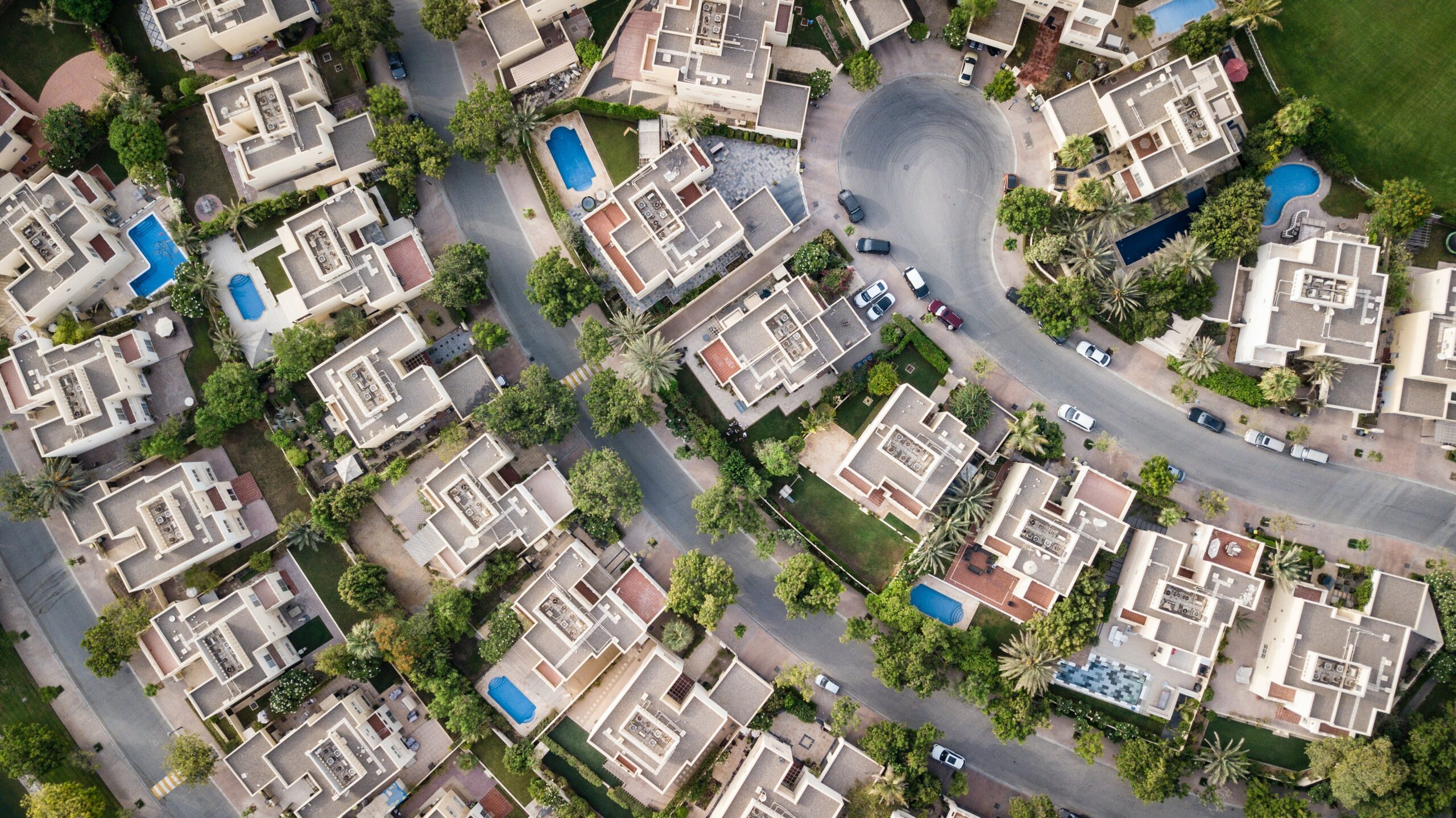Real estate has always been a visual industry. Buyers want to see what they’re investing in, whether it’s a home, a commercial property, or a rental. Traditionally, property viewings have relied on in-person tours, printed brochures, and static images. However, as technology advances, the way people experience real estate is undergoing a dramatic transformation. Among the most powerful tools leading this evolution is Augmented Reality (AR). In particular, when integrated with Multiple Listing Service (MLS) platforms, AR provides an immersive, informative, and highly convenient way to tour properties virtually.
This article explores how augmented reality can enhance virtual property tours, the benefits it offers to the real estate industry—especially in Arab countries—its technical considerations, and what the future of real estate viewing might look like with AR at its core.

What is Augmented Reality?
Before diving into its applications in real estate, it’s important to understand what augmented reality is and how it works.
Augmented Reality overlays digital elements—such as images, 3D models, sounds, or text—onto the real world. Unlike virtual reality, which immerses users in a completely digital environment, AR adds layers of information to what a person sees through their phone camera, smart glasses, or tablet screen.
For example, someone using an AR app can point their phone at a vacant room and instantly see how it would look furnished. They can walk through a property and get information about each space as they move around, without needing a tour guide. In real estate, AR opens the door to interactive experiences that are far more dynamic than simple photos or videos.
The Shift Toward Virtual Property Tours
Virtual property tours have become increasingly popular, especially after the COVID-19 pandemic, which made in-person tours difficult or even impossible. People began relying more on video walkthroughs, 3D modeling, and interactive floor plans to understand properties remotely. MLS platforms worldwide started including these elements as part of their standard listing features.
While these tools have improved the browsing experience, they are still limited in how interactive they are. AR takes this a step further. Instead of just watching a video of a property, users can experience it in their physical environment. They can view a 3D representation of the property placed virtually on their table, explore rooms by moving their phone in space, or even walk around a property while seeing digital notes or design suggestions pop up in real-time.
How Augmented Reality Works in MLS Platforms
Integrating AR into MLS platforms involves embedding digital content into property listings. When a user clicks on an AR-enabled listing, they are prompted to use their mobile device to either scan a room or place a 3D model of the property in their surroundings.
Let’s say a person is interested in an apartment in Dubai. Instead of just looking at photos and reading the description, they can launch the AR experience from the MLS app. Their screen shows a 3D model of the apartment’s layout. As they move their phone around, they can “enter” each room and inspect the design. If they’re physically visiting the property, they can use AR to display interior design suggestions, renovation ideas, or even information about plumbing, lighting, or square footage—layered over the real-world view.
MLS platforms can also incorporate AR for new construction projects. Buyers can view finished virtual models even before the foundation is built. Developers can use AR to showcase the vision for a project, helping investors and buyers understand the final product.
Benefits of AR-Driven Virtual Property Tours
A More Immersive Experience
AR provides an immersive experience that static images and even videos cannot match. Buyers can get a spatial understanding of the property—how large a room feels, how light enters the space, and how furniture fits into a room. This helps set realistic expectations and reduces disappointment during physical visits.
Increased Engagement and Better Decision-Making
AR makes listings more interactive and fun to explore, keeping users on the MLS platform longer. When buyers engage more deeply with listings, they are more likely to shortlist properties and move forward with inquiries. It also helps them make more informed decisions. By seeing a room with potential modifications or in different styles, they can picture themselves living or working there.
Time and Cost Efficiency
AR helps save time for both buyers and agents. Instead of scheduling dozens of physical tours, buyers can narrow their list down using AR tours and only visit their top choices. For agents and developers, it reduces the cost of printed marketing materials and frequent showings.
Accessibility for Remote Buyers
In many Arab countries, including the UAE, Saudi Arabia, and Egypt, foreign real estate investment is significant. Many buyers live abroad and can’t visit properties easily. AR allows these buyers to tour homes, offices, or stores from anywhere in the world, breaking down geographical barriers.
Marketing and Differentiation
MLS listings with AR features stand out from the competition. They give agents a modern, tech-forward image and allow them to showcase properties uniquely. This is especially important in competitive urban markets like Riyadh, Abu Dhabi, or Cairo, where standing out in a crowded MLS database can make or break a sale.
Use Cases in Arab Real Estate Markets
The potential of AR in Arab real estate markets is significant due to the region’s focus on innovation and rapid urban development.
In Dubai, which has positioned itself as a smart city and tech hub, developers are already using AR to showcase off-plan projects in places like Downtown Dubai, Business Bay, and Dubai Creek Harbour. Buyers can walk through virtual models of luxury towers using AR apps on their phones.
In Saudi Arabia, the Vision 2030 program is driving urban projects across cities like Riyadh and NEOM. AR could help government platforms and private developers showcase their vision to investors. Virtual walkthroughs of future smart cities could accelerate foreign investment and public support.
In Egypt, where real estate remains one of the safest investment options, AR could help young buyers and diaspora Egyptians explore new compounds in New Cairo, Sheikh Zayed, or the New Administrative Capital. With increasing internet penetration and mobile usage, AR can reach a wide audience with minimal friction.
In Morocco, Tunisia, and Jordan, tourism plays a major role in property demand. AR-enhanced listings could be used by short-term rental operators and holiday property managers to attract buyers and renters with virtual tours.
Technical Requirements and Considerations
To successfully implement AR in MLS platforms, several technical and practical considerations must be addressed.
AR content must be created professionally. This includes accurate 3D modeling of the property, smooth user interface design, and compatibility with multiple devices and operating systems. MLS platforms must ensure that the AR feature works smoothly on iPhones, Androids, tablets, and AR glasses if adopted.
Bandwidth is another factor. AR content can be heavy in size. For regions with slower internet speeds, MLS platforms must optimize their AR experiences to load quickly without sacrificing visual quality.
Device accessibility is also important. While many people in the Arab world use smartphones, the quality of those devices varies. MLS platforms should consider offering basic and advanced AR options so that users with older devices can still benefit.
MLS platforms will also need to train real estate agents and property managers on how to use AR. Listings must be enhanced with accurate metadata—room sizes, angles, colors, and more. This data must be collected carefully during site visits or by using architectural plans.
Challenges and Limitations
Despite the many benefits, AR in MLS platforms is still in its early stages. Challenges include:
- User Education: Not all buyers are familiar with AR. MLS platforms must educate users on how to access and navigate AR content.
- Content Quality: Poorly made AR models can backfire. If the experience is glitchy or inaccurate, it may turn buyers away.
- Cost: Creating 3D models and maintaining AR features requires an upfront investment. Smaller agencies might struggle to afford the tools needed.
- Data Privacy: If AR collects real-time user data like GPS or camera feeds, platforms must ensure strong data protection and comply with local privacy laws.
The Future of AR in Real Estate
The role of AR in real estate is only expected to grow. As technology improves and becomes more affordable, AR could become a standard feature in most MLS platforms.
Imagine AR being combined with Artificial Intelligence. A buyer launches an AR tour and receives real-time suggestions based on their preferences—like showing different wall colors or room layouts as they walk around. Or combining AR with voice search so users can ask questions while touring: “How big is this room?” or “What’s the view from this window?”
In the future, AR may also integrate with smart home technology. Buyers could use AR to preview how a property’s smart lighting, climate control, or security system operates.
AR may also support sustainability goals. Buyers can view energy-efficient upgrades, solar panel placements, and eco-friendly materials through AR overlays.
MLS platforms in the Arab world are in a strong position to lead this innovation. With governments and private sectors investing in smart cities, real estate tech, and youth-led entrepreneurship, AR adoption could be swift and widespread.
Conclusion
Augmented Reality is not just a futuristic concept—it is a practical, transformative tool for the real estate industry today. For MLS platforms, it offers a way to enhance property listings, engage users, and stay competitive in a digital-first world.
In Arab countries, where real estate is a key economic pillar and innovation is a national priority, AR-powered virtual property tours offer a bridge between tradition and technology. Whether helping an investor in Jeddah visualize a retail space or guiding a family in Amman through their future home, AR is changing how people explore, understand, and commit to real estate.
As MLS platforms continue to evolve, embracing AR will be essential to staying relevant, improving customer experience, and opening new markets. The journey has just begun—but the possibilities are already exciting and endless.













